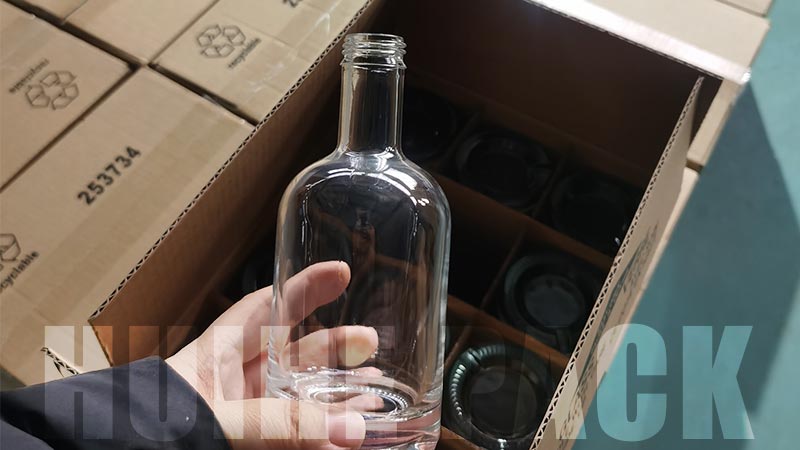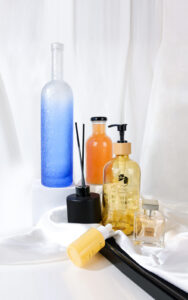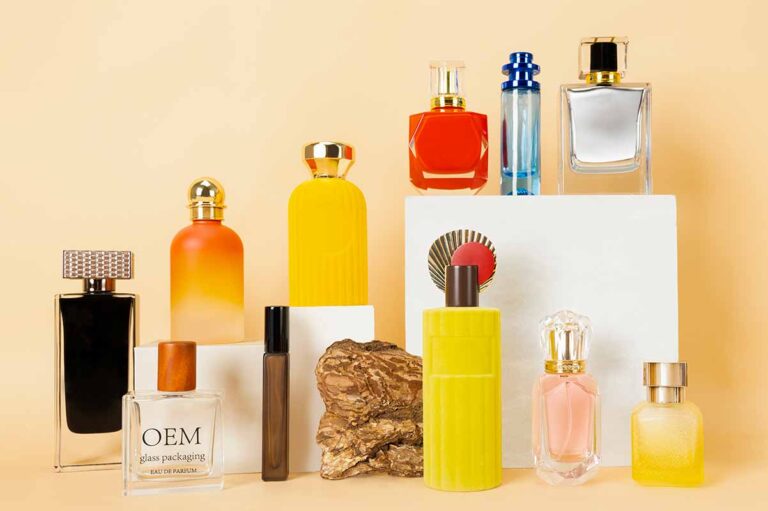Why Glass Packaging Needs Extra Care
Glass is elegant, sustainable, and endlessly recyclable — but it’s also one of the most fragile materials to ship. Unlike plastic or metal, glass has almost no flexibility. Even a small impact or vibration during transit can cause cracks or complete breakage.
In B2B shipments, industry estimates place the average glass breakage rate at around 2-5% when packaging and handling are of moderate quality. Over long-haul ocean freight routes, that rate sometimes climbs higher. For example, in a hypothetical scenario, a 40-ft container carrying about 45,000 wine bottles could suffer 1,000-2,200 cracked units before the container opens — amounting to $1,800-$4,000 in losses per load if each bottle’s wholesale cost is about $1.80. And that’s before you factor in reverse logistics, insurance claims, customer charge-backs, and damage to brand reputation.
Most glass breakage happens because of three main factors:
- Vibration and shock during transport, especially in long-distance trucking or sea freight.
- Overstacking on pallets or inside cartons, which puts too much pressure on lower layers.
- Sudden temperature changes, which can stress the glass surface and cause microcracks.
The real cost of broken glass goes far beyond the product itself — it includes replacement fees, repacking labor, shipping insurance claims, and customer dissatisfaction. That’s why using the right packaging method isn’t just about protection — it’s about maintaining your business reputation and profit margin.

Step-by-Step Guide: How to Ship Glass Items Safely
Shipping glass safely is all about preparation and attention to detail. Whether you’re sending a single wine bottle or a full pallet of jars, following the right steps can dramatically reduce breakage and returns. Here’s a simple, proven process you can follow:
1. Choose the Right Box Size
Pick a carton that fits snugly around your glass items without too much empty space. A box that’s too large allows movement, while one that’s too tight can cause pressure cracks.
Pro tip: Leave about 2–3 inches (5–7 cm) of space around each item for cushioning materials.
2. Wrap Each Item Individually
Every glass bottle or jar should have its own layer of protection. Use bubble wrap, kraft paper, or molded pulp trays to cushion all sides. Secure the wrap with tape so it doesn’t come loose during transport.
If you’re shipping bottles, wrap from bottom to neck and double-layer the shoulder area — it’s the most impact-sensitive zone.
3. Add Cushioning Layers
Line the bottom of the box with shock-absorbing materials like air pillows, foam sheets, or corrugated dividers. After placing the wrapped glass items, fill remaining gaps with paper or loose-fill to prevent movement. Finish with a top layer of padding before closing the box.
For bulk shipments, consider custom cardboard dividers or honeycomb paper inserts — they’re lightweight yet highly protective.
4. Seal & Label Properly
Use strong H-pattern tape sealing on the top and bottom flaps to keep the box secure. Reinforce the edges with extra strips if the contents are heavy.
Label the package clearly with “Fragile,” “Handle with Care,” and “This Side Up.” This alerts handlers to take extra precautions during transit.
5. Test Drop Before Shipping
Before sending large batches, perform a quick drop test from waist height (about 1 meter). Check for internal shifting or damage signs. This simple test helps you catch packaging issues before they become costly shipment losses.
Many manufacturers, including HUIHE PACK, use vibration and impact simulations to ensure their packaging solutions can handle real-world shipping conditions.
By following these steps, you’ll minimize the risk of breakage and ensure your glass bottles arrive safely and professionally — every time.

Recommended Packing Materials for Glass Bottles
| Material Type | Function | Best Practice / Notes |
| Bubble Wrap | Impact absorption | Wrap each bottle tightly, especially around the shoulders and base. Use large-bubble sheets for heavy bottles and small-bubble for light ones. |
| Cardboard Dividers | Prevent bottle contact | Customizable for different bottle sizes; corrugated versions add rigidity—ideal for export cartons or long-haul shipping. |
| Foam Inserts | Secure positioning | Common in premium packaging; EVA or PE foam provides tight, form-fitting support for high-end spirits or fragile glass. |
| Corrugated Boxes | Outer protection | Use double-wall boxes (ECT 44–48) for better crush resistance and moisture protection, especially in stacked or international shipments. |
| Shrink Film | Stabilize sets | Wrap pallets tightly to prevent shifting; combine with corner protectors and stretch wrap for a stable, impact-resistant load. |
How to Ship Bulk Glass Bottles (B2B Guide)
Shipping bulk glass bottles is a different game from mailing a few fragile items. For wholesalers, brand owners, and packaging buyers, every pallet matters — and even a small percentage of breakage can mean thousands in losses. Below are proven practices and export-ready standards that help ensure your bottles arrive safely and professionally.
1. Palletizing Tips for Safe Bulk Shipping
Proper palletization minimizes shock, tilt, and vibration damage during long-distance transport.
- Use Corner Protectors & Stretch Film — Reinforce every pallet corner with cardboard or plastic protectors before tightly wrapping with stretch film. This prevents shifting and absorbs side impact.
- Avoid Overstacking Beyond 1.2 m Height — Keeping pallet height within 1.2 m maintains carton integrity and reduces top-crush risk. Always distribute weight evenly.
- Choose Sea-Freight Cartons Rated for Export — Opt for cartons meeting ECT 44–48 or 5-ply standards to withstand stacking pressure and moisture in long-haul ocean freight.
Pro Tip: Always palletize with a flat, non-slip base and shrink-wrap the entire load for maximum stability.
2. HUIHE’s Export-Grade Packaging Standards
At HUIHE PACK, every shipment is designed to meet international export quality requirements:
- Compression Test: Ensures cartons can bear the full stacking load during container transport.
- Drop Test: Simulates real-world handling and vibration during loading/unloading.
- Moisture Resistance: Protects packaging strength even under high humidity conditions in ocean containers.
These tests help guarantee consistent performance across sea, air, and land shipments — whether you’re exporting to Europe, North America, or Southeast Asia.

3. Key Considerations for International Transport
Each transport mode has different risks, so your packaging strategy should adapt accordingly:
| Transport Mode | Main Risks | Packaging Focus |
| Sea Freight | Vibration, humidity, long stacking periods | Use moisture-resistant cartons and desiccant packs |
| Air Freight | Pressure changes, handling shocks | Reinforced boxes with light foam inserts |
| Land Freight | Continuous vibration and bumps | Use double-wall boxes and strong pallet wraps |
| Courier / Express | Rough handling, frequent transfers | Individual bottle wrapping and “Fragile” labeling |
4. Sustainable & Eco-Friendly Packaging Options
Sustainability is no longer optional for global brands. HUIHE offers eco-conscious solutions to meet evolving buyer expectations:
- Molded Pulp Inserts — 100% recyclable and biodegradable alternative to foam.
- Paper-Based Cushioning — Kraft honeycomb wrap and corrugated pads replace plastic fillers.
- Recyclable Stretch Films — Opt for LDPE films that can be reprocessed after delivery.
By combining eco-friendly materials with export-tested durability, your brand can achieve both sustainability and shipping efficiency.
Conclusion: Ship Smart, Protect Every Bottle
Shipping glass safely isn’t just about wrapping — it’s about strategy, testing, and the right materials. From choosing export-grade cartons to mastering palletization, every step helps reduce breakage and protect your brand reputation. At HUIHE PACK, we help B2B clients design custom glass packaging that passes international shipping tests — so your products arrive intact, presentable, and ready to sell.

FAQs
1. How to package a glass bottle for shipping?
Wrap each bottle individually using bubble wrap or kraft paper, add cardboard dividers to prevent contact, and use a double-wall corrugated box for outer protection. Always label the package “Fragile” and “This Side Up.”
2. How to pack glass bottles for international travel?
Use foam inserts or molded pulp trays inside export-rated cartons. For sea freight, ensure moisture-resistant materials and include desiccant packs. Keep pallet height under 1.2 m and wrap with stretch film for stability.
3. How do you ship glass without bubble wrap?
If you prefer eco-friendly alternatives, try molded pulp inserts, honeycomb kraft paper, or corrugated pads. These materials cushion just as well as plastic while being fully recyclable.
4. How to pack a glass bottle for a courier?
For small courier shipments, use a snug-fit inner box with padding on all sides. Wrap bottles individually, add extra cushioning at the bottom, and seal with heavy-duty tape. Always test by lightly shaking — there should be no movement inside the box.




